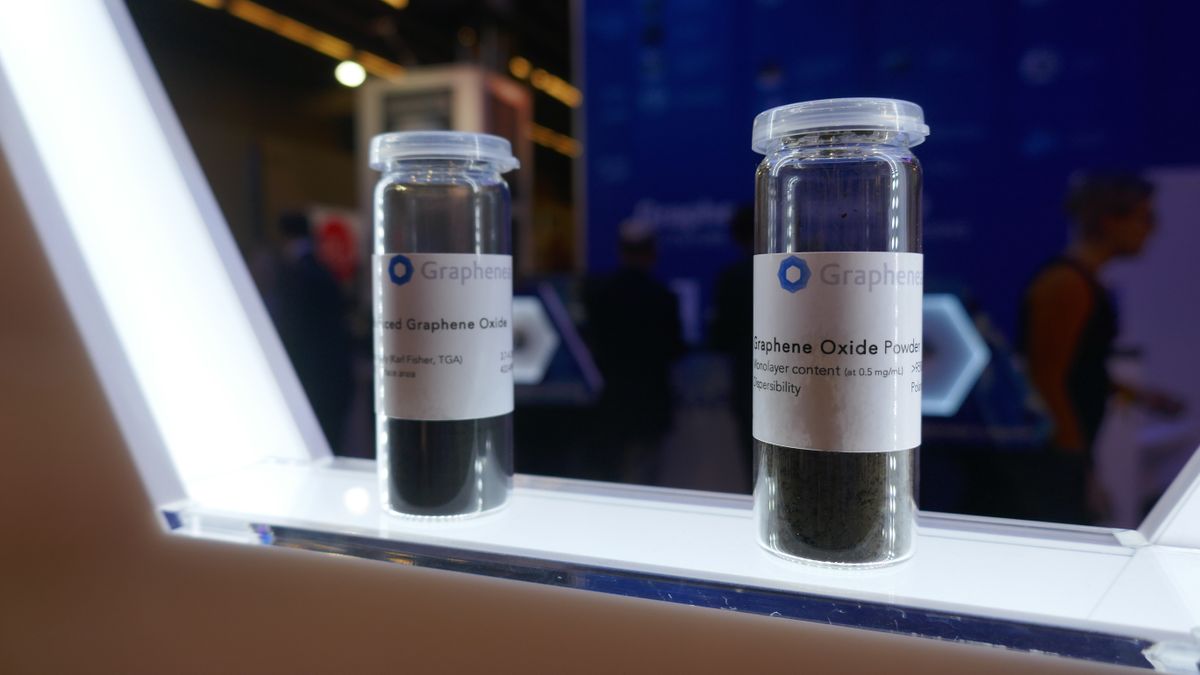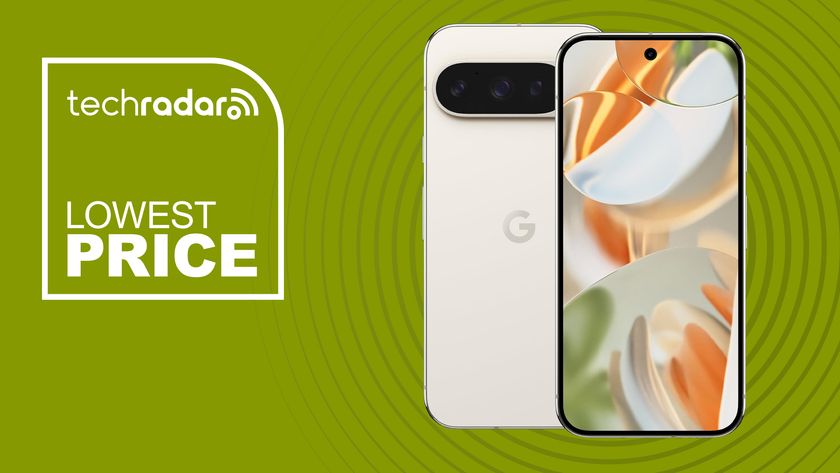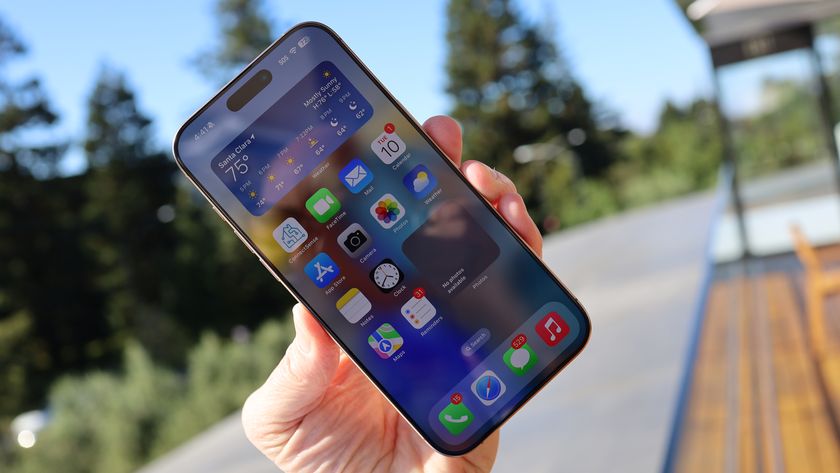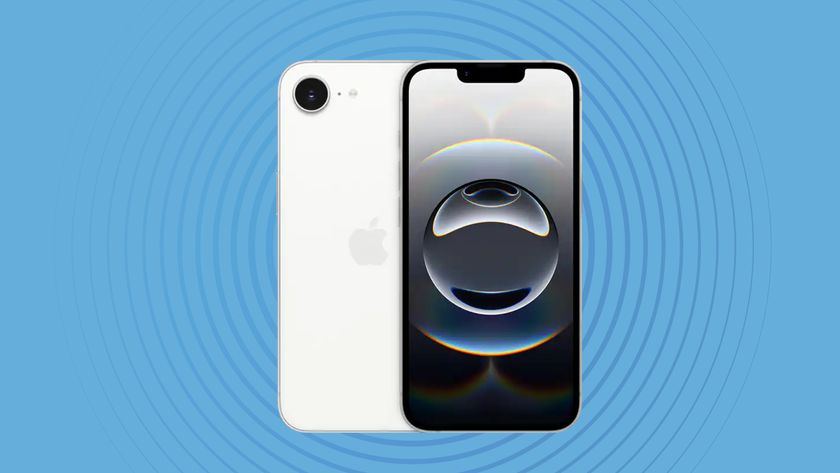Why is graphene taking so long?
Graphene's arrival means flexible phones and 5G

Graphene is proper 'disruptive technology'. Every press release in the tech industry now contains that awful phrase, but graphene is the only material capable of changing the world of electronics as we know it.
It's ultra-light, just an atom thin, and yet it’s 200 times stronger than steel. It's flexible, transparent, and more conductive than copper. Scientists have been promising stronger, lighter, flexible products, faster transistors, bendable phones, and many other breakthrough graphene gadgets for over a decade. So, what's taking scientists so long to make the graphene era a reality? Or, is it really taking as long as some think?
Time to market
"It's amazing people say it's taking a long time because if you look back in history it's taken a lot longer for new tech to get to market than graphene has," says Frank Koppens from the Institute of Photonic Sciences (ICFO) in Barcelona, and the Scientific Chair of the Graphene Pavilion at last week's MWC 2018. "If you look at your smartphone, the technology inside it was invented 30-40 years ago – there are about 25 Nobel Prizes for Physics inside in there," he says. "All those inventions were made in the 1960s, and it wasn't until much later on that they found their way into consumer products."
Discovered a little over 10 years ago, it is already possible to buy products that contain graphene. "So I would say the opposite," says Koppens. "Graphene has been remarkably fast to market."
What is graphene?

You've heard of graphite. It's in pencils. Now imagine millions of atom-thin flakes of it. That's graphene, which was theorized as a super-material for decades, but only isolated in 2004 by Andre Geim and Konstantin Novoselov at the University of Manchester.
It was a fundamental scientific discovery. The story goes that Geim and Novoselov used sticky tape to remove some flakes of graphite from a lump of bulk graphite, and noticed that some were thinner than others; the smallest were just one atom thick – graphene. Six years later they were awarded the Nobel Prize for Physics, and since then there's been an explosion in graphene research around the world. The number of graphene-related patent applications is now well over 50,000.
Where can I buy graphene?
Products using graphene for sale include the Xiaomi Mi Pro HD earphones, which contain a graphene diaphragm 'for faster sound transmission', and to retain 100% of the circuit's original signal for higher-res audio.
Get daily insight, inspiration and deals in your inbox
Sign up for breaking news, reviews, opinion, top tech deals, and more.
Then there's HEAD, which sells both the YouTek Graphene Speed tennis racket and its Kore freeride skis, which uses a composite of carbon, graphene and koroyd.

Italian luxury brand Momodesign sells a graphene motorcycle helmet, Vittoria Corsa G+ produce graphene-infused tires that don't wear out as quickly, McLaren puts it inside its RM 50-03 luxury watch, and the BAC Mono supercar, which has graphene in its panels.
Lamborghini and MIT just announced a project to develop a graphene-enhanced super-capacitor electric vehicle. There are even airships that use graphene, though perhaps the most exciting use for graphene in gadgets are the incoming batteries from Samsung and Huawei's Central Research Institute. Promising to extend the battery life of an iPhone, the NanoCase will also soon be on sale.
Why is graphene so special?
"It's very versatile, and what's very special about it is its electronic properties – there is no other material that is so conductive," says Koppens. "It also has lots of other properties that are crucial – it's flexible and easy to integrate it into micro-electronics, and as a raw material, it's cheap," he says. "It's just made out of carbon."
Isolating it as one-atom thin sheets was the breakthrough, but now that's been achieved, producing graphene flakes is a straightforward process. Those flakes can now easily be mixed into inks to print flexible graphene-infused electronics.

However, graphene shouldn't be thought of as something that will replace silicon in electronics, but rather as something that will improve upon what we have now. "Silicon has been very successful for electronics, but it has limitations on speed and power consumption," says Koppens. "The nice thing about graphene is that it can be added as an additional component to existing chips."
When will we see graphene in phones?
Indium-tin oxide is currently used for touchscreens because it conducts well, but it's brittle; cue graphene.
When are the first flexible graphene screens coming from the tier-1 brands? "The big brands just don't say – they keep things very secret when they're using graphene," says Koppens. This is partly because there's an industry-wide race to produce the first foldable, bendable and/or flexible phones. "I know some companies are making flexible screens that they claim will be on the market this year or next year, and there are smartwatches in China that use graphene in touchscreens," says Koppens.

It’s something that scientists at the University of Sussex are also working on. "Those screens will be curved at first, and then eventually become flexible," says Koppens, who nevertheless believes that the next high-profile use of graphene in gadgets will be in ultra-fast charging smartphone batteries.
Graphene's 5G opportunity
It might be pushing 5G as hard as it can, but the telecoms industry knows that more radios means more heat in antennas and data centres – and in 5G phones. "5G requires speed and low power consumption, and that's what graphene is good at," says Koppens.

On the Graphene Pavilion in Barcelona last week was an all-graphene optical communication link from Italy's National Inter-University Consortium for Telecommunications (CNIT), which was also showing on the Ericsson booth. "A transmitter and detector both made from graphene can detect and modulate light very fast at a very low power consumption," says Koppens.
Although it's been seeping onto the market in various ways and in a great variety of products, for graphene to truly go mainstream in the world of electronics, something critical has to happen; commercial mass-production. That’s risky. "It always takes a long time for new materials to get into mass production," says Koppens. "The first transistor was invented in the 1950s using silicon, and it took another 30 years before we had microelectronics … graphene needs investors to take a risk."
- Samsung's latest: check out our hands on Galaxy S9 review
Jamie is a freelance tech, travel and space journalist based in the UK. He’s been writing regularly for Techradar since it was launched in 2008 and also writes regularly for Forbes, The Telegraph, the South China Morning Post, Sky & Telescope and the Sky At Night magazine as well as other Future titles T3, Digital Camera World, All About Space and Space.com. He also edits two of his own websites, TravGear.com and WhenIsTheNextEclipse.com that reflect his obsession with travel gear and solar eclipse travel. He is the author of A Stargazing Program For Beginners (Springer, 2015),



